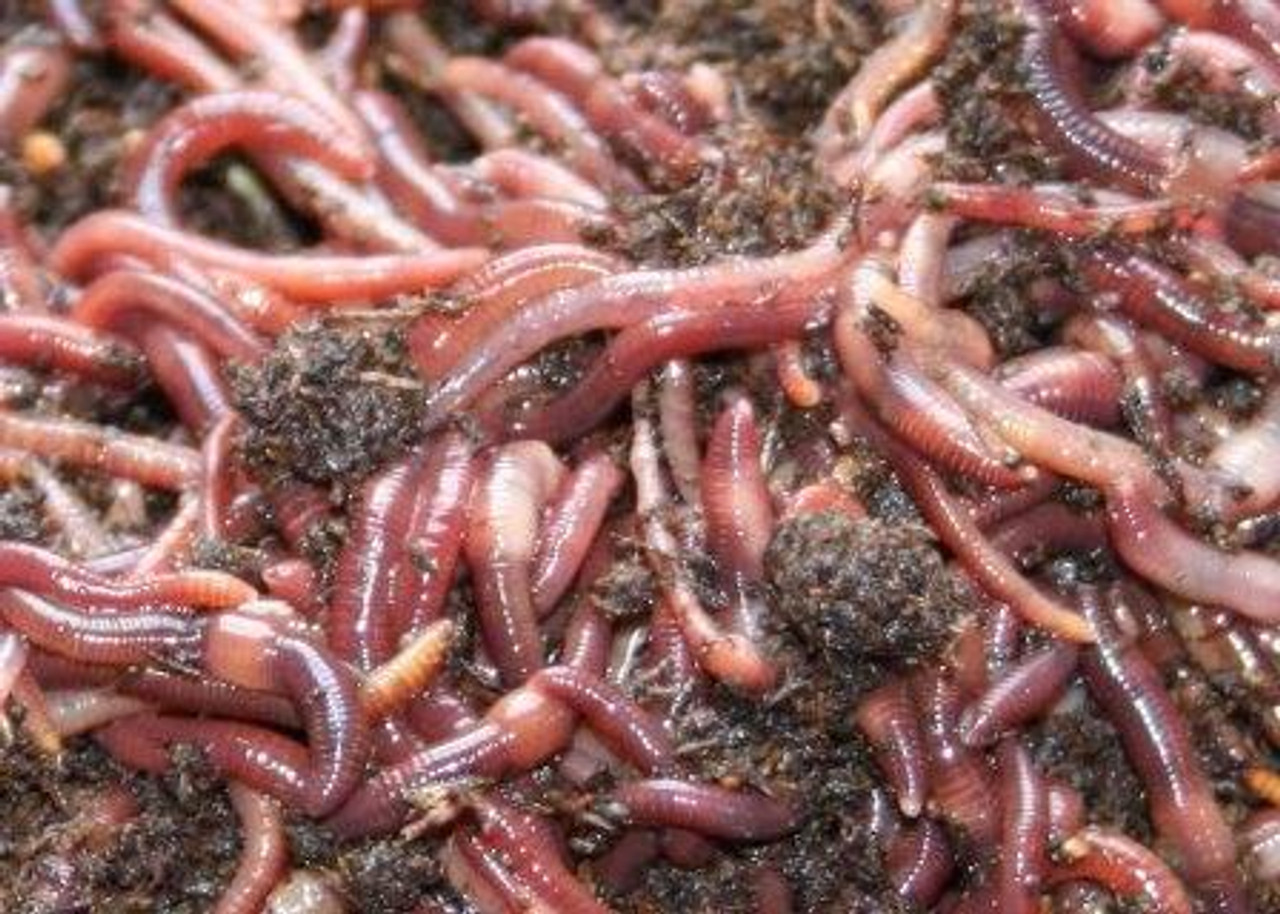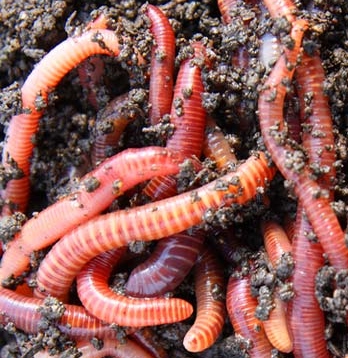Taking Advantage Of the Power of Red Wiggler Composting: A Thorough Look at the Environmental and Agricultural Advantages of This Natural Waste Reduction Method
The practice of red wiggler composting represents a compelling junction of environmental stewardship and farming innovation, offering a lasting solution to the expanding difficulties of waste administration and soil destruction. Via the natural procedure of vermicomposting, organic waste is transformed right into a beneficial source that not only enhances soil however also adds to a considerable reduction in garbage dump payments and greenhouse gas emissions. As we discover the multifaceted advantages of this method, we uncover just how it can reshape farming practices and advertise environmental recognition, motivating a closer exam of its possible influence on our neighborhoods and ecosystems.
What Are Red Wiggler Worms?
Red wiggler worms, scientifically referred to as Eisenia fetida, are a species of earthworm especially adapted for composting and natural waste break down. These worms flourish in the nutrient-rich setting of decomposing raw material, making them excellent for vermicomposting systems. Expanding to a size of about three to 4 inches, red wigglers are defined by their reddish-brown pigmentation and distinctive banding patterns along their bodies.
Unlike other earthworm varieties, red wigglers favor to occupy the top layers of soil and organic particles, where oxygen degrees are higher and food sources are abundant. Their physical adjustments permit them to process organic materials efficiently; they have a strong digestive system that enables them to convert waste into nutrient-rich spreadings, usually referred to as "black gold" in gardening and agricultural contexts.
Eisenia fetida plays an essential duty in the ecosystem by promoting the decay process, improving dirt framework, and promoting microbial activity. Provided their unique attributes and environmental relevance, red wiggler worms have actually become a main component in sustainable waste monitoring techniques and organic horticulture efforts, adding considerably to environmental health and wellness.
Advantages for Dirt Health
The incorporation of red wiggler worms in composting systems supplies significant benefits for dirt health and wellness. These worms play an essential function in the decomposition process, damaging down raw material right into nutrient-rich vermicompost. This natural fertilizer improves dirt oygenation, framework, and water retention, adding to a more favorable setting for plant growth.
Vermicompost is rich in essential nutrients such as nitrogen, potassium, and phosphorus, which are important for plant growth (Red Wiggler Composting). The presence of advantageous bacteria in vermicompost further promotes dirt health by enhancing nutrition availability and subduing soil-borne microorganisms. This dynamic communication cultivates a durable dirt community that supports lasting agricultural practices
In addition, red wigglers assist in the development of humus, a stable natural issue that improves soil fertility and strength. This raised natural web content not just boosts dirt structure yet also improves its capacity to withdraw carbon, reducing climate adjustment influences.
Integrating red wiggler composting right into agricultural systems can, consequently, bring about much healthier dirts, higher plant yields, and boosted sustainability. Because of this, embracing this natural waste decrease approach can generate extensive advantages for both the setting and farming efficiency.
Impact on Waste Reduction
Integrating red wiggler worms right into composting systems considerably lowers waste, transforming natural products that would certainly otherwise contribute to landfills into important compost. This technique, called vermicomposting, efficiently processes kitchen area scraps, yard waste, and various other biodegradable products, bring about a significant reduction in the volume of waste sent to land fills. According to the Epa, organic waste consists of a significant section of landfill contents, producing hazardous greenhouse gases as it breaks down anaerobically.
By utilizing red wigglers, a very effective composting agent, services and find out here now households can draw away a significant amount of organic waste from these land fills. Each pound of red wigglers can refine and take in about half a pound of organic waste daily, leading to an exceptional decrease in overall waste generation.
Moreover, the application of vermicomposting assistances regional waste management efforts and advertises a round economy, wherein waste is transformed right into a source. As neighborhoods increasingly adopt this practice, the cumulative result on waste decrease becomes obvious, cultivating a more lasting atmosphere Full Report and motivating liable waste administration techniques. Welcoming red wiggler composting not only mitigates waste concerns but also enhances area recognition regarding sustainable living.
Enhancing Agricultural Practices
Using red wiggler worms in farming methods can considerably boost dirt health and crop productivity. These worms play an important duty in the composting procedure, breaking down raw material right into nutrient-rich vermicompost. This natural plant food enhances soil oygenation, water, and structure retention, which are crucial for robust plant growth.
Additionally, the castings created by red wigglers are abundant in essential nutrients, such as nitrogen, potassium, and phosphorus, promoting healthier crops with greater yields. The microbial activity promoted by these worms also adds to a flourishing soil ecosystem, increasing biodiversity and resilience versus illness and parasites.

In addition, making use of vermicompost can boost dirt pH degrees, making nutrients much more easily accessible to plants. Red Wiggler Composting. Consequently, farmers can grow healthier plants while concurrently contributing to soil conservation efforts, ultimately producing an extra lasting agricultural future
Beginning With Composting
The primary component in red wiggler composting is organic waste, which can include cooking area scraps, backyard waste, and paper products. This equilibrium promotes an ideal environment for red wigglers, which are the vital organisms in this composting approach.
Selecting a suitable composting system is similarly essential. Worm bins can be created for outside or indoor use, and they ought to give appropriate drain and oygenation. It is recommended to begin with a tiny number of worms-- around one extra pound of red wigglers for every single one pound of waste created weekly.

Verdict

The method of red wiggler composting represents an engaging intersection of ecological stewardship and agricultural innovation, supplying a sustainable remedy to the expanding obstacles of waste management and dirt deterioration.Moreover, the application of vermicomposting supports neighborhood waste monitoring efforts and advertises a circular economic climate, in which waste is transformed into a resource. As neighborhoods increasingly embrace this practice, the collective result on waste decrease comes to be evident, promoting a much more lasting atmosphere and motivating accountable waste monitoring practices. The key ingredient in red wiggler composting is natural waste, which can consist of kitchen scraps, lawn waste, and paper products.In recap, red wiggler composting offers a lasting remedy for organic waste management, producing nutrient-rich vermicompost that substantially enhances dirt health and wellness.